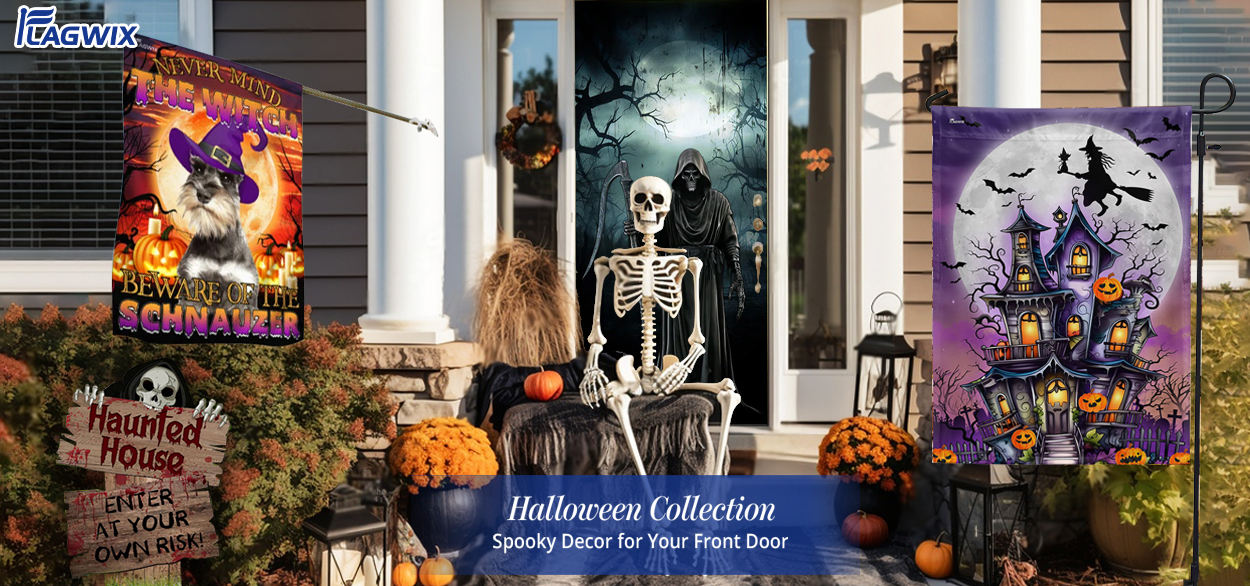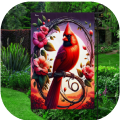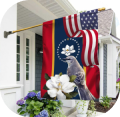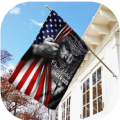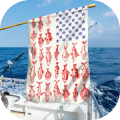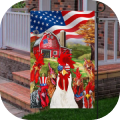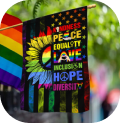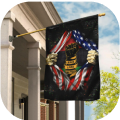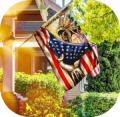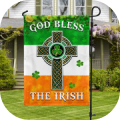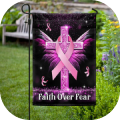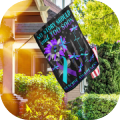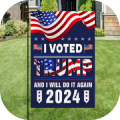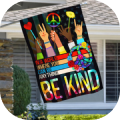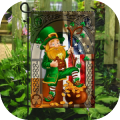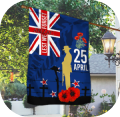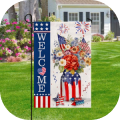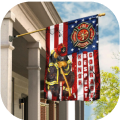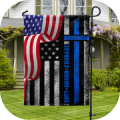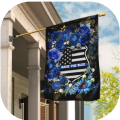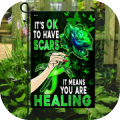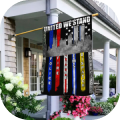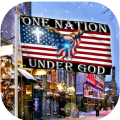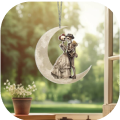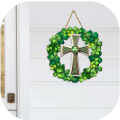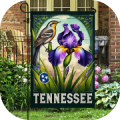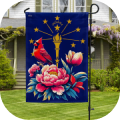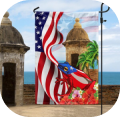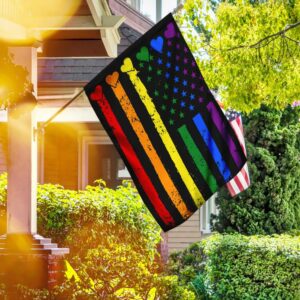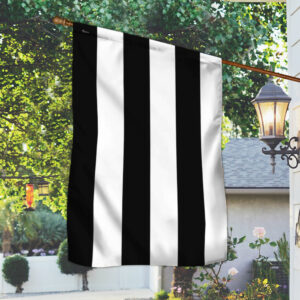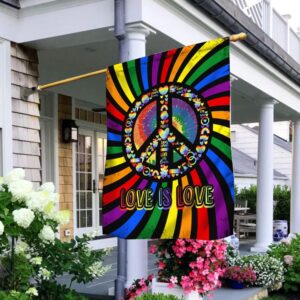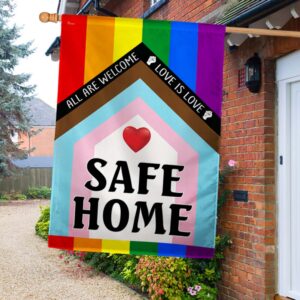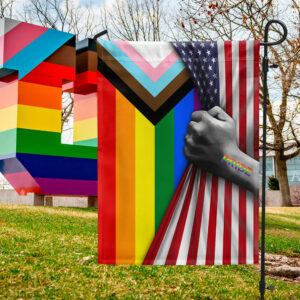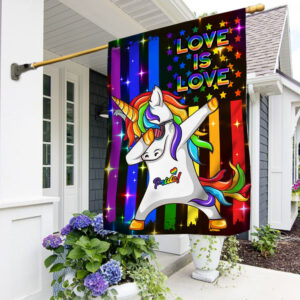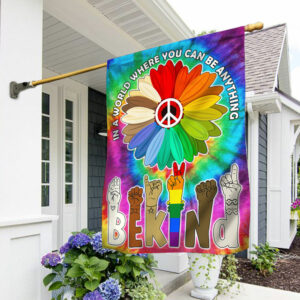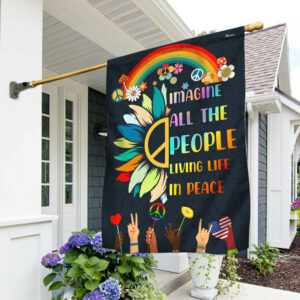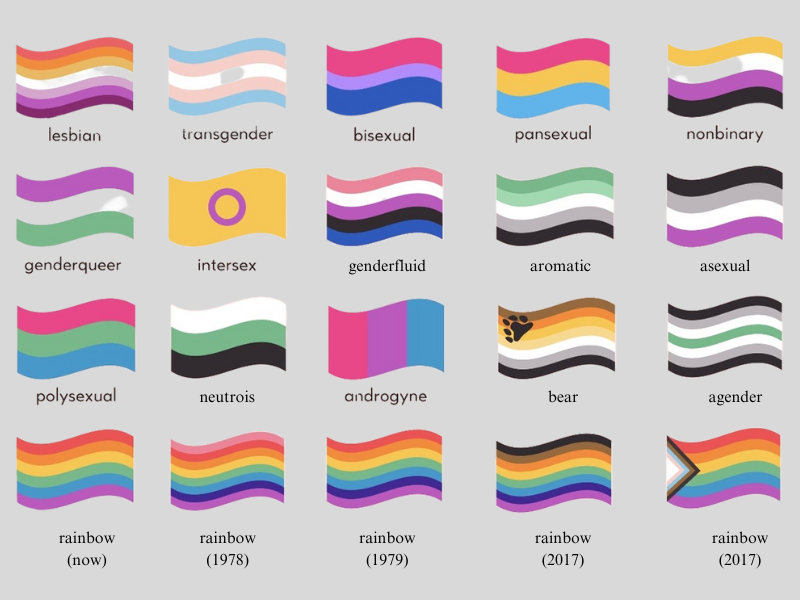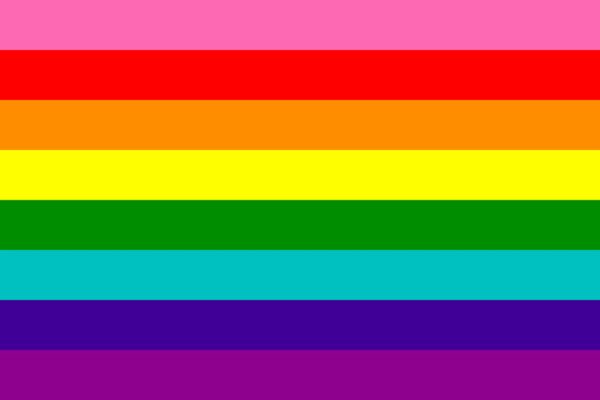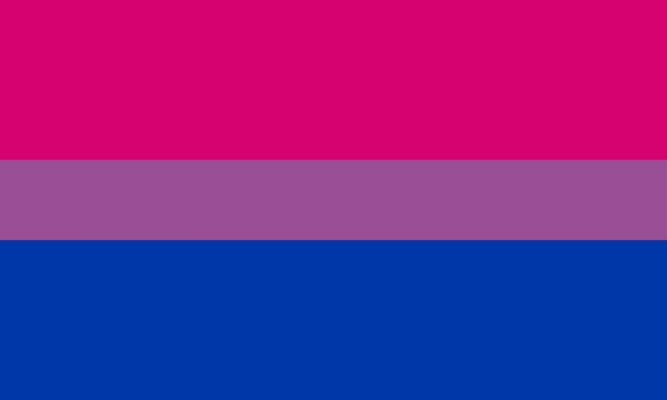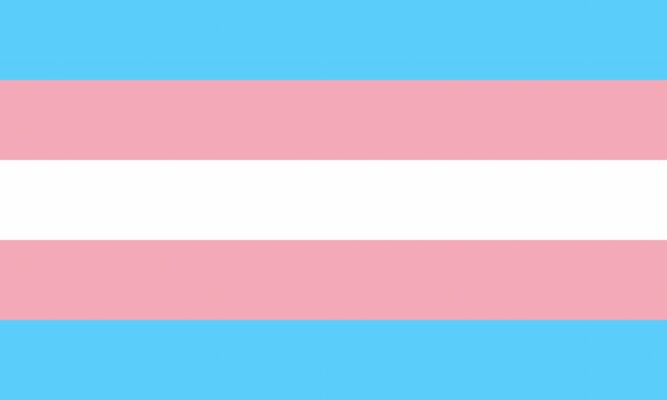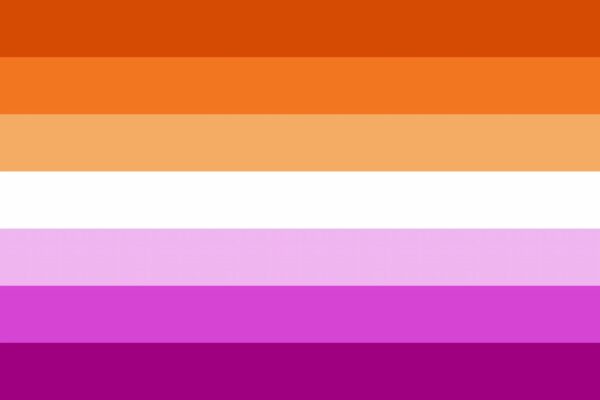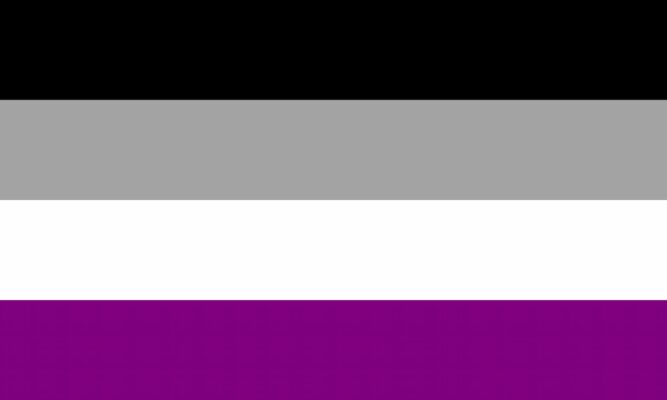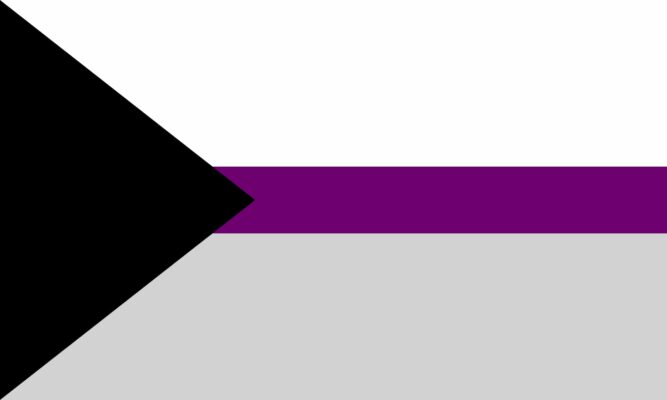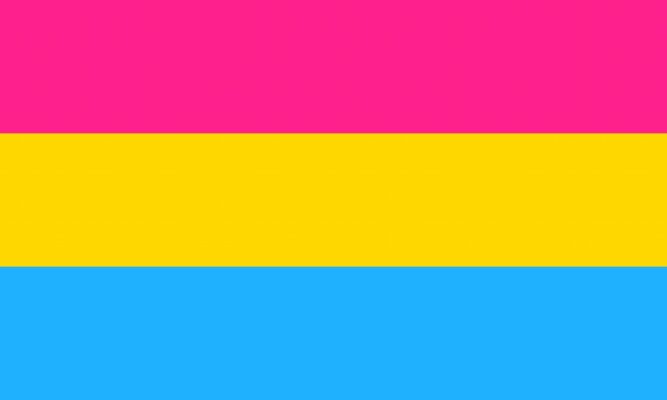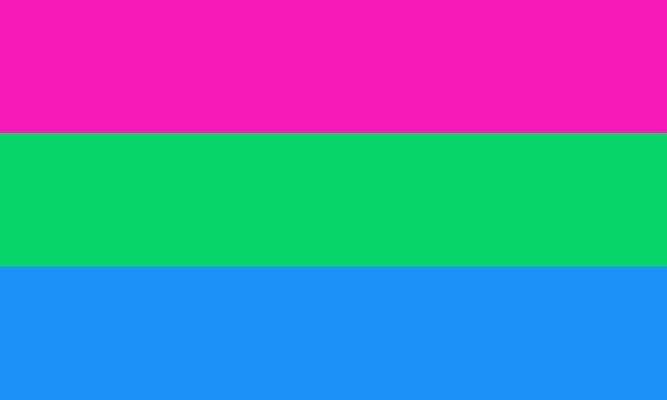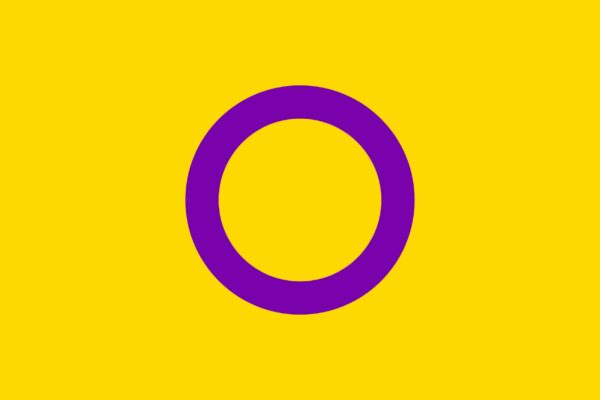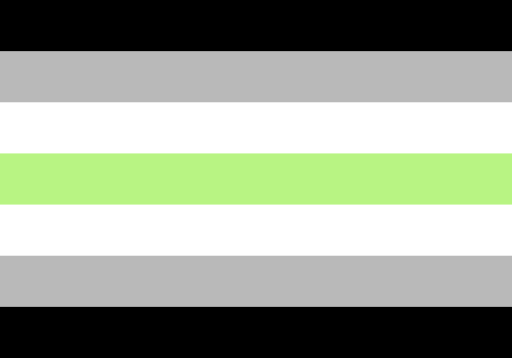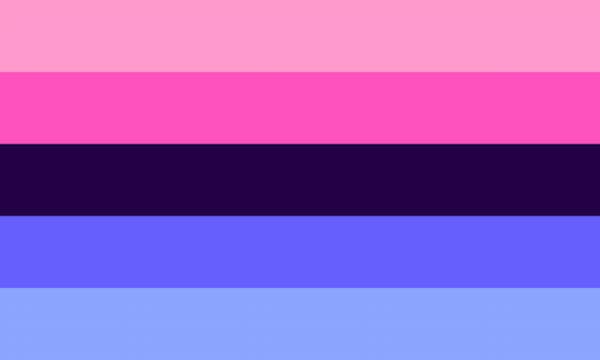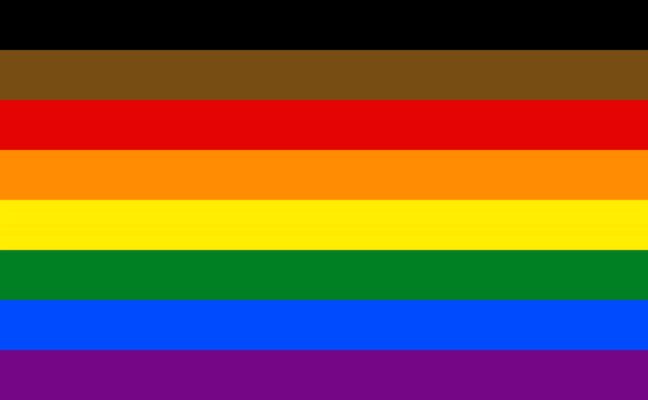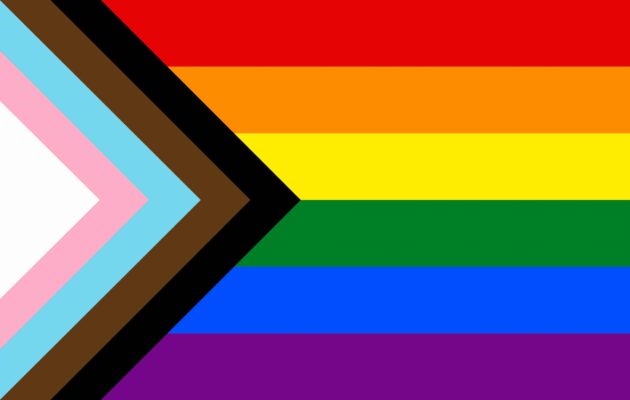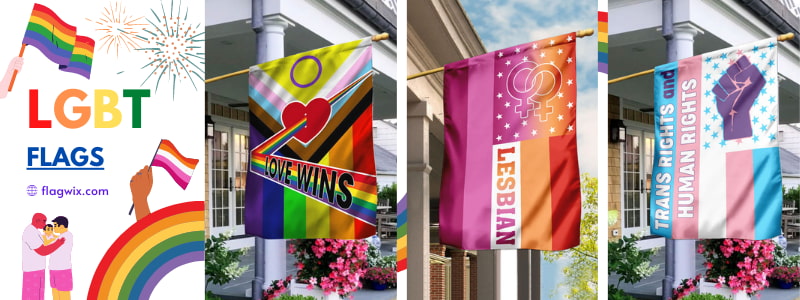LGBT Flags
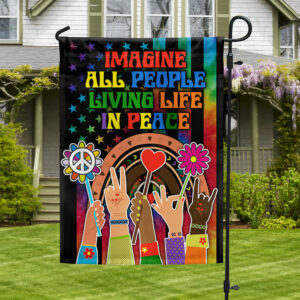
Hippie Peace Rainbow Flag Imagine All People Living Life In Peace MLN1450F
$27.95 – $49.95 Add to cart
Peace Sign Hippie, Imagine All The People Living Life In Peace Grommet Flag TPT597GF
$49.95 – $89.95 Add to cart
Hippie Flag In A World Where You Can Be Anything Be Kind. Peace Sign Flag TPT245Fv1
$27.95 – $49.95 Add to cart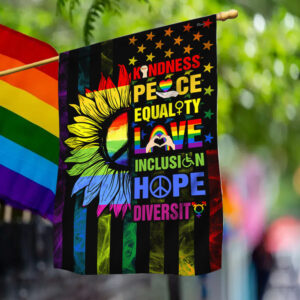
Kindness Peace Equality Love Inclusion Hope Diversity Sunflower Flag BNN401F
$27.95 – $49.95 Add to cart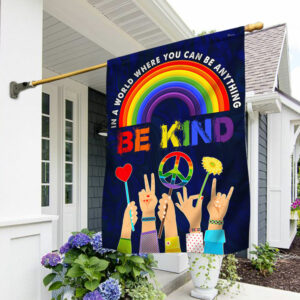
Hippie Flag In A World Where You Can Be Anything Be Kind. Peace Sign Rainbow LGBT Flag TPT247F
$27.95 – $49.95 Add to cart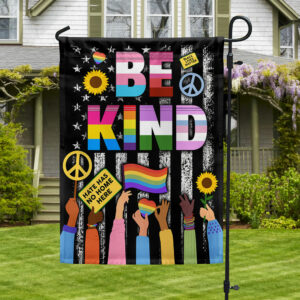
Be Kind Hippie Peace LGBTQ Kindness Equality Hate Has No Home Here Flag MLN1457F
$27.95 – $49.95 Add to cart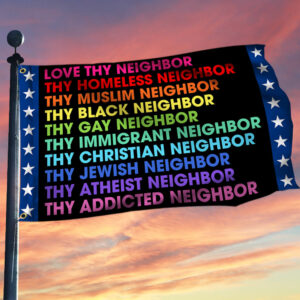
Love Thy Neighbor Peace Feminism BLM Homeless LGBT Grommet Flag MLN467GF
$49.95 – $89.95 Add to cartThere are many LGBT flags that you might see in the LGBT community.
- What are the different flags within the LGBT community and what do they represent?
- Are there any lesser-known or regional LGBT flags that are not as widely recognized?
- How can I show support and inclusivity by displaying or using LGBT flags appropriately?
So in this guide, we’ll be talking about what the different LGBT flags mean, where they originated from, and how they came to be associated with the community in the first place. Scroll down!
Types Of LGBT Flags?
In fact, there are over 50 LGBT flags out there, many more than any other flag-waving group in history. In a world where almost nothing can remain static, LGBT communities have remained a pretty dynamic group of people. And it makes sense that there are so many different flags for them to fly. Since all LGBT people are different, it only makes sense that their flags would be as well.
Throughout history, the rainbow pride flag has been known for representing the whole community. However, it isn’t, by any means, a comprehensive list of all identities or all LGBT flags under the LGBT+ umbrella.
Below are the 21 most common LGBT flags used to represent each individual in the LGBTQ+ community, in addition to (or instead of) the rainbow flag.
20 Types of LGBT Flags and Their Meanings
In fact, there are some differences between rainbow colors and the LGBT flags. The main difference is about the colors, the meaning, and the types of people in the LGBTQ community.
1. Pride Flag
The Rainbow Flag was created by Gilbert Baker in 1978. In 2016, it became one of Time Magazine’s top 100 designs. The rainbow flag is considered a symbol of LGBT pride, commonly flown at gay pride parades, events, and demonstrations.
Are you asked?
What’s The Autistic Pride Day For?
It stands for lesbian, gay, bisexual, transgender, and queer people.
- Red symbolizes life.
- Orange symbolizes healing.
- Yellow symbolizes sunlight.
- Green symbolizes nature.
- Blue symbolizes art/harmony.
- Purple symbolizes spirit (the purple passion for crossing gender boundaries).
— Don’t forget to check Flagwix Pride Month flags [new edition]—
Together, all of these show LGBT people working towards harmony with nature, art, and spirit in their lives and spiritual enlightenment and joyous celebration of life!
“The next time someone asks you why LGBT Pride marches exist or why Gay Pride Month is June tell them ‘A bisexual woman named Brenda Howard thought it should be.’” – Brenda Howard
2. Bisexual Flag
Bisexuality is romantic attraction, sexual attraction, or sexual behavior toward both males and females (or people of any gender identity). It may also imply an interest in more than one gender sexually. This can sometimes lead to feelings of isolation, making it hard for a bisexual person to find like-minded people. As such, a bisexual flag was designed by Michael Page in 1998 to create unity amongst all those who are sexually attracted to both sexes.
People also asked
What is Bi flag? History Of The Bi Flag and The Bi Curious Flag You Didn’t Know Existed
There are three solid horizontal bars on the bisexual flag: 2/5ths pink, 1/5ths purple, and 2/5ths blue.
- Pink represents attraction to females;
- Blue represents attraction to males,
- Purple represents sexual attraction to both sexes.
The bisexual flag is often called the bi flag for short.
3. Transgender Flag
The trans pride flag was created in 1999 by Monica Helms, a transgender woman. Helms’ design stripes represent traditional masculine (blue) and feminine (pink) colors. The light blue also represents people transitioning from one gender to another while still identifying as their original birth sex.
Try to find out more?
Trans Flag and Why It’s Pink, White, Blue
Some use this trans flag to represent only transsexuals (people who identify as transgender). Meanwhile, others use it to describe a more inclusive definition of transgender people, including cross-dressers or those who are intersex.
4. Lesbian Flag
The versions of the lesbian flag have gone through many updates in its history. This is the most popular version among the LGBT community today, with three pink stripes at the bottom, three orange stripes at the top, and a white stripe in the middle. As far as we know, the lesbian flag was introduced by the Tumblr blogger Emily Gwen in 2018.
Do you know?
Lesbian Flag and Its Variations Throughout History [Info & Images]
This newly designed flag had seven stripes of different colors, from top to bottom:
- Dark orange for gender non-conformity
- Light orange for independence
- White signifies unique relationships to womanhood, and so on
- Light pink for serenity and peace
- The dark rose represents femininity
5. Asexual Flag
The asexual flag was designed by an Asexual Visibility and Education Network (AVEN) community member named Oryx in November 2010. The flag contains four horizontal stripes (Black, Gray, White, Purple).
- Black represents asexuality.
- Grey for Grey-asexuality and demi-sexuality, which we’re discussing in the next flag
- White represents Non-asexuality and allies
- Purple represents the whole community
More about Asexual Flag
A Brief History of Asexual Flag And How It Was Chosen
6. Demisexual Flag
A demisexual person does not experience sexual attraction unless they form a solid emotional connection with someone. They might be asexual because they rarely experience sexual attraction or because it’s under particular circumstances when they do. Demisexuality is distinct from a gray-asexual identity, where someone doesn’t feel sexual attraction but isn’t sure if it exists for them in general. (The word demi means half or partial in French)
The demisexual flag’s colors are similar to the asexual flag but with a different layout. It has a black triangle on the left side of the flag, with a white bar on top, gray at the bottom, and purple in the middle.
The meaning of color is the same as the asexual flag’s.
7. Pansexual Flag
Pansexuality is the attraction to all genders. The most common symbol of this sexual orientation is a combination of pink, blue, and yellow stripes.
- Pink stands for female
- Blue for male
- Yellow for neutral.
No one actually knows who created the pan flag, but it was first used in 2010 at Pride Toronto when there was confusion about whether bisexual people were male or female because they were attracted to both sexes.
More about the Pan flag
How The Pansexual Flags Coloring The World? Read & Unpacking the Colors
8. Genderqueer Flag
Marilyn Roxie designed the genderqueer flag in 2011 to represent non-binary gender identities or people who don’t think, feel and behave the way society supposes they should follow based on their biological genders. It comprises three stripes with three colors (lavender, white, and green).
- White represents those who identify as neither gender (agender)
- Lavender represents androgyny
- Green represents non-binary people.
9. Genderfluid Flag
The genderfluid people suppose they have more than one gender identity. But rather than stay in only one gender identity in their lifetime, they shift between many different types (male, female, bi, or anywhere on the spectrum).
JJ Poole is the creator of the genderfluid flag (2012). The flag comes with five horizontal stripes.
- Pink represents femininity
- White for all gender
- Purple represents the combination between masculinity and femininity
- Black represents agender
- Blue for masculinity
10. Polysexual Flag
The polysexual pride flag represents those attracted to multiple genders (heterosexual, homosexual, bisexual) but not necessarily feeling that they have to choose one or the other. It is not a polyamorous flag as polyamory means more than being attracted to multiple genders.
Polysexual people are only interested in relationships with multiple gender identities/genders in which one person can enjoy relationships with more than one person at once. They do not engage in a polyamorous relationship where it is formed between three or more partners of any gender or sexuality.
Three stripes with three different colors on the flag have their own meanings:
- Pink represents attraction to women
- Blue represents attraction to men
- Green represents attraction to the non-binary
11. Intersex Flag
Intersex people are born with sex characteristics that do not fit typical binary notions of male or female bodies. Intersex is sometimes abbreviated to DSD (Differing/Disorders of Sex Development). Many intersex people prefer gender-neutral pronouns such as they, rather than binary-gendered pronouns like he or she.
Morgan Carpenter (from Organisation Intersex International Australia) created the intersex flag. It was first shown at a demonstration for human rights for intersex people in OII AP’s home country of Australia on October 26, 2013.
- Yellow is a historical color of the intersex community and represents an entirely different shade besides pink (females) and blue (males)
- The purple circle in the middle symbolizes unbrokenness and potentiality
12. Agender Flag
The agender pride flag symbolizes an absence of gender. Some people call this non-gendered, neutrois, or genderless.
In 2014, Salem X designed the agender flag with seven equal-sized stripes in the colors black, gray, and white with a central stripe of green; then finishing off with alternating white and gray.
The agender color palette consists of four colors:
- Black and White represent lacking specific genders
- Gray represents those who are semi-genderless
- Green for those who identify as nonbinary (neither male nor female)
13. Androgyne Pride Flag
An androgyne is someone who has traits of both sexes. They don’t show only one or the other, but instead show both at once, without either taking over for good. They can be defined in terms of biological sex, gender identity, or gender expression, such as their outward presentation of themselves – it all depends on where they feel most comfortable. What sets them apart though? The flag!
In 2014, it was created for this concept on Tumblr using the colors pink, blue, and purple.
- Femininity as pink
- Masculinity as blue
- What could be interpreted as anything in between being represented by purple
14. Aromantic Flag
An aromantic is someone who experiences little or no romantic attraction to others. Many aromantics identify as asexual, but not all aromantics are asexual. In fact, some aromantics prefer to think of themselves as non-asexual, noting that they experience a sexual attraction while they do not experience romantic interest.
Others consider themselves romantic individuals who simply do not want to be in a romantic relationship with anyone else. If you’re an aromantic, though, it’s possible you still have questions about what all that means for your life and those around you—especially if you live in a culture that often conflates romance with sex.
Learn more about the Aromantic flag
Aromantic Flag Meaning Explained by its Colors
15. Omnisexual Flag
An omnisexual is someone who romantically, sexually, or emotionally desires other people of any kind. This means they’re not attracted to a particular gender but still recognize it when it comes up.
They’re sexually attracted to males, females, transgenders, etc. – whoever they please because to them − love knows no boundaries and all that jazz.
And even though omnisexual people exist, there’s still this consistent question every time one hears about the omni flag – what do the three colors represent?
- Purple means attraction to those outside the norm – aka non-binary persons
- Blue represents attraction toward men
- Pink stands for attraction toward women.
These are just conjectured at best but it doesn’t stop an Omni from having their own opinions about it!
16. Neutrois Pride Flag
Those who identify as neutrois feel they are somewhere in between genders.
For some, this feeling could mean indifference to gender and merely nonexistence (nullity) of what society identifies as a girl or boy.
The distinction often made is that agender describes the experience of having no gender whatsoever while neutrois signifies one’s feeling of neutrality with their own sex/gender — neither female nor male but both.
The colors on the flag stand for different concepts:
- White refers to being in-between genders
- Black means one could not identify if they were male or female
- Dark chartreuse green symbolizes whichever way someone could not decide about which color might be theirs
“If a transvestite doesn’t say I’m gay and I’m proud and I’m a transvestite, then nobody else is going to hop up there and say I’m gay and I’m proud and I’m a transvestite for them.” – Marsha P. Johnson
17. Non-Binary Flag
The non-binary flag is a flag that has become an icon of gender variance. This flag symbolizes all genders other than female or male, including neutrons, agender, genderqueer, two spirits, bigender, pangender, and many more!
- Yellow represents the independence of the gender binary
- White represents all gender identities possible
- Purple represents the combination of both genders: males and females
- Black represents those who identify themselves as having no gender identity (agender)
18. Philadelphia’s People of Color Inclusive Flag
This flag was created in 2017 to recognize and represent LGBTQ black and brown people. What’s unique about the flag is a black stripe and brown stripe, overlapping a more prominent transverse rainbow stripe.
19. Progress Pride Flag
The Progress Pride Flag is a flag created in 2018 by Daniel Quasar to show additional support for transgender people. It’s a modernized version of Gilbert Baker in 1978 and Philly’s version (in 2017), as shown above.
20. Unlabeled Flag
The unlabeled flag appeared last year (2021) on online platforms. A Reddit user created the flag to represent people who do not want their gender identity labeled. The common reasons people wish not to mark their genders come from the belief that there are no labels that can describe their gender and no desire to reveal their gender identity (for safety or other reasons).
21. Straight Ally Flag
This flag is more than just a symbol; it is a way of life!
The Straight Ally flag was created in the 2000s to signify the allies’ comfort and support of the LGBTQ community. In today’s society, so many straight allies are open about their support for LGBTQA people. No one should ever have to feel alone or like they do not have anyone who has their back when facing homophobia. Remember: all you need is love!
What Netizens Really Think About Straight Ally Flag?
Decorative Pride Flags For Sale
Those Pride flags are a sacred symbol for every member of the LGBT community because they represent the diversity of humans in general and serve as the fight to end discrimination against the LGBTQ+ community.
They are now available everywhere on the e-commerce platform and in your local flag craft store, particularly during Pride Month.
Flagwix, on the other hand, wanted to bring designs that are more vibrant, unique, and playful (based on the original LGBT flags, as you might wonder). Our decorative flags will turn heads and send a positive message to people in Pride parades or on a block. They are all flags LGBT people would want in June.
Check out our selection right here on this page and get yours today!
Spookify your space! 🦇🌌 Wave high our LGBT Halloween flags!
